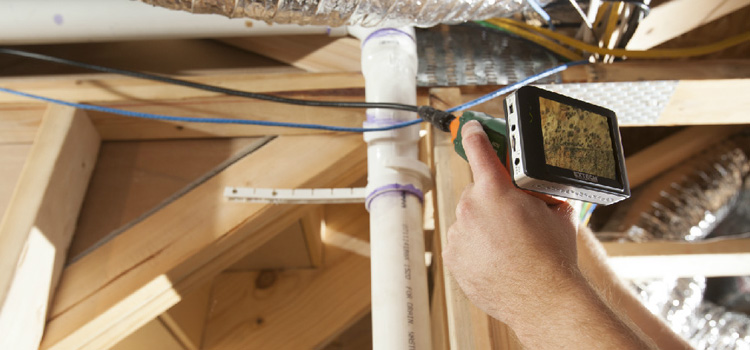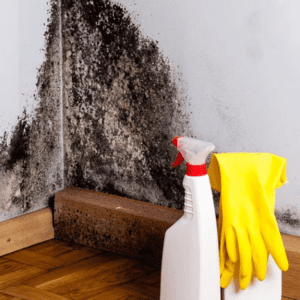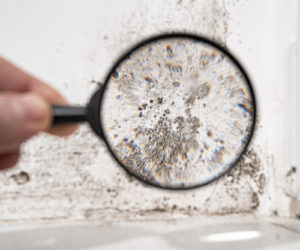Support on What to Do After Mold Remediation
Effective Article Mold Remediation Solutions for Your Home
Mold and mildew growth in homes can be a persistent concern, frequently needing a systematic method for efficient post-remediation solutions. From comprehending the elements that add to mold and mildew development to applying proper cleaning methods and wetness control measures, the procedure can be intricate yet important for keeping a healthy living setting. Post remediation mold testing near me.
Recognizing Mold Development Variables
The primary aspect adding to mold and mildew growth is moisture. Mold and mildew spores need dampness to germinate and thrive, making moist or damp atmospheres extremely vulnerable to mold problems.

Furthermore, air flow and light direct exposure can influence mold development. Areas that do not have proper ventilation and all-natural light are more vulnerable to mold advancement. By resolving these factors comprehensively, people can properly alleviate mold and mildew development and protect their living environments.
Appropriate Mold Cleaning Techniques
Using reliable cleansing methods is necessary in protecting against the recurrence and resolving of mold contamination in interior atmospheres. When handling mold and mildew, it is crucial to focus on security by using protective gear such as gloves, masks, and goggles. The very first step in proper mold and mildew cleansing is to include the afflicted area to stop the spread of spores to unpolluted locations. This can be attained by sealing the space and utilizing air scrubbers or unfavorable air equipments to maintain air high quality.

Executing Wetness Control Measures
To efficiently stop mold and mildew growth and contamination in indoor atmospheres, executing wetness control steps is critical. Moisture is the main aspect that fuels mold development, making it essential to manage moisture levels within the home. One effective procedure is to use dehumidifiers to maintain indoor moisture degrees listed below 60%. Additionally, ensuring appropriate air flow in areas vulnerable to moisture accumulation, such as shower rooms and kitchens, can help in reducing the danger of mold and mildew growth. Routinely examining and fixing any type of leaks in pipes, roofs, or windows is also crucial in protecting against excess wetness buildup. Using exhaust followers while food preparation or showering, and enabling air flow by keeping furnishings a little away from wall surfaces useful source can assist in dampness control. Using moisture-resistant products in high-humidity locations, such as mold-resistant drywall and paints, can be helpful. By diligently carrying out these dampness control steps, house owners can effectively minimize the probability of mold and mildew recontamination and keep a healthy interior environment.
Utilizing Natural Remediation Solutions
After efficiently implementing moisture control procedures to protect against mold and mildew development in interior settings, house owners can now check out the effectiveness of natural removal services in preserving a healthy living area. All-natural remediation options utilize ecologically pleasant approaches to fight mold and mildew and mold, making them a popular choice for those looking for safe options. By incorporating these natural removal services right into their cleaning regimens, homeowners can successfully deal with mold growth while advertising a much healthier interior environment for themselves and their families.

Maintaining a Mold-Free Setting
Frequently checking areas prone to mold development, such as shower rooms, cooking areas, basements, and attic rooms, is critical. Proper air flow in locations with high moisture levels is also crucial to preventing mold and mildew growth.
Furthermore, keeping sanitation in the home is important for mold avoidance. Maintaining interior plants in check and guaranteeing proper drain in exterior landscape design can minimize dampness build-up, lowering the probability of mold and mildew infestations.
Conclusion
To conclude, it is important to resolve mold and mildew growth factors, make use of correct cleansing techniques, carry out wetness control actions, utilize all-natural remediation options, and preserve a mold-free environment in order to efficiently manage blog post mold and mildew removal in your home - Post Remediation verification. By complying with these techniques, you can protect against mold and mildew from persisting and ensure a reference healthy living atmosphere for you and your household
The key element adding to mold development is moisture. Mold spores require moisture to thrive and sprout, making moist or wet settings very susceptible to mold invasions.To effectively stop mold and mildew development and contamination in interior settings, carrying out dampness control actions is critical. In addition, ensuring correct ventilation in areas vulnerable to moisture accumulation, such webpage as kitchen areas and shower rooms, can aid decrease the threat of mold development.After effectively carrying out dampness control actions to stop mold and mildew development in interior environments, house owners can currently discover the efficiency of natural removal services in maintaining a healthy and balanced living room.